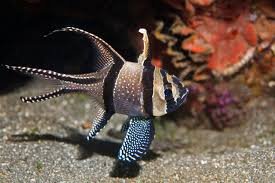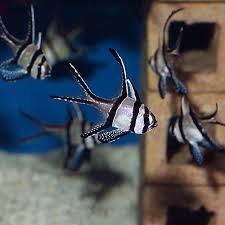Chinese ink wash painting, or shui mo hua (水墨画), is one of the most esteemed art forms in China, embodying centuries of cultural heritage and philosophical depth. Among its many subjects, dragons (龙, Lóng) hold a special place, symbolizing power, wisdom, harmony, and the cosmic balance between heaven and earth.
The depiction of dragons in ink wash paintings goes beyond mere artistic expression; it reflects profound spiritual and philosophical beliefs rooted in Daoism, Confucianism, and Buddhism. Whether appearing in imperial court paintings, Daoist mystical artworks, or as auspicious symbols in private collections, dragons are portrayed with a sense of dynamism, majesty, and divine presence.
In this article, we will explore the artistic representation of dragons in Chinese ink wash paintings, their symbolic meanings, traditional techniques, and their influence on contemporary art.
1. The Symbolism of Dragons in Chinese Ink Wash Paintings
1.1 The Dragon as a Cosmic Being
In traditional Chinese thought, the dragon is not a mere mythical creature; it is an embodiment of qi (气)—the life force that flows through all things. Unlike Western dragons, which are often depicted as malevolent, Chinese dragons are benevolent celestial beings that control water, wind, and storms.
- Dragons are associated with the five elements (wood, fire, earth, metal, and water), often depicted as guardians of cosmic balance.
- The Azure Dragon (青龙, Qīnglóng) of the East is particularly prominent in ink wash paintings, symbolizing strength, renewal, and protection.
- Dragons also represent the unity of yin and yang, their serpentine bodies flowing in harmonious curves that mirror the balance of opposing forces in nature.
1.2 Imperial Power and Authority
Throughout Chinese history, the dragon was closely linked to the emperor, who was believed to be the Son of the Dragon (龙子, Lóngzǐ). This association is reflected in court paintings where dragons are depicted with:
- Clouds and thunder, representing the emperor’s divine mandate to rule.
- Golden or yellow hues, symbolizing imperial authority and prosperity.
- Nine-clawed dragons, a motif exclusive to the emperor, whereas lesser nobility could only use dragons with four or five claws.
1.3 Spiritual and Mystical Symbolism
Beyond imperial significance, dragons in ink wash paintings also appear in Daoist and Buddhist artistic traditions:
- Daoist paintings often depict dragons emerging from mist and clouds, symbolizing their ethereal nature and connection to immortality.
- Buddhist paintings feature dragons as protectors of sacred teachings, often guarding pearls of wisdom or Buddhist sutras.
2. Traditional Techniques in Painting Dragons
2.1 The Art of Brushwork in Dragon Paintings
Chinese ink wash painting relies on expressive brushwork rather than rigid outlines, and dragons are no exception. The movement of the brush captures the fluidity and vitality of the dragon, making it appear as if it is soaring through the heavens.
Some key brush techniques used in dragon paintings include:
- “Flying white” (飞白, Fēibái) – A technique that leaves streaks of white within brushstrokes, creating the illusion of wind and movement in the dragon’s body.
- “Bone method” (骨法, Gǔfǎ) – Used to outline the dragon’s form with bold yet flowing strokes, emphasizing its dynamic motion.
- “Ink wash layering” (渲染, Xuànrǎn) – Achieved by varying the intensity of ink, creating depth and atmosphere in the clouds surrounding the dragon.
2.2 Composition and Structure of Dragon Paintings
Traditional dragon paintings follow a composition that highlights:
- The elongated, twisting body of the dragon, creating a sense of movement and fluidity.
- Clouds, mist, and water, reinforcing the dragon’s celestial and elemental nature.
- A dynamic pose, often with the dragon coiling around mountains or diving through stormy skies, emphasizing its supernatural power.
2.3 Color and Monochrome Styles
While ink wash painting primarily relies on black and gray tones, some dragon paintings incorporate subtle touches of red, blue, or gold, especially in imperial and ceremonial art.
- Monochrome ink dragons symbolize wisdom, introspection, and Daoist philosophy, emphasizing simplicity and natural flow.
- Colored dragon paintings were often used in imperial palaces to highlight the regal and auspicious nature of the creature.
3. Notable Dragon Paintings in Chinese Art History
3.1 “Nine Dragons” by Chen Rong (1244 AD)
One of the most famous dragon paintings in Chinese history is “Nine Dragons” (九龙图, Jiǔ Lóng Tú) by Chen Rong, a painter from the Song Dynasty.
- This masterpiece features nine dragons emerging from storm clouds, each uniquely depicted in various poses and expressions.
- The painting showcases exquisite ink techniques, with dragons rendered in bold, expressive strokes and misty backgrounds that create an ethereal atmosphere.
- It is considered a Daoist-inspired work, reflecting the power of nature and the mysterious forces governing the universe.
3.2 “Dragon Amid Clouds” by Zhang Lu (Ming Dynasty)
Zhang Lu, a Ming Dynasty artist, created paintings featuring dragons swirling among clouds, emphasizing their divine and elusive nature. His works are noted for:
- Soft, fluid brushwork, making the dragons appear as if they are constantly moving.
- Symbolic use of negative space, allowing the viewer’s imagination to complete the painting.
3.3 Imperial Dragon Scrolls
During the Qing Dynasty, elaborate dragon scroll paintings were commissioned for court rituals and celebrations. These scrolls often depicted:
- Dragons blessing the emperor with rain, signifying prosperity and stability.
- Five-clawed dragons soaring above mountains, symbolizing the ruler’s connection to heaven.
4. The Influence of Dragon Paintings on Modern Art
4.1 Contemporary Chinese Ink Artists
Modern Chinese artists continue to reinterpret traditional dragon motifs, blending classical techniques with abstract or experimental approaches.
- Xu Beihong introduced Western realism into ink wash dragon paintings, adding more lifelike anatomy while preserving traditional brushwork.
- Wu Guanzhong combined abstract expressionism with ink wash, creating dynamic, contemporary dragon depictions.
4.2 Dragons in Calligraphy-Inspired Art
Some modern artists merge dragon imagery with Chinese calligraphy, using free-flowing strokes that mimic both dragon forms and poetic characters. This reflects:
- The unity of visual art and written language, an essential concept in Chinese culture.
- The spontaneity of ink brush techniques, capturing the essence rather than the details of the dragon.
4.3 Digital and Mixed-Media Dragon Art
With advancements in digital painting, contemporary Chinese artists are exploring new ways to depict dragons while maintaining the spirit of traditional ink wash.
- Some digital artworks emulate ink wash aesthetics, using brushstroke-like textures.
- Others integrate modern symbolism, placing dragons in futuristic or surreal settings.
This evolution highlights the dragon’s enduring role in Chinese artistic and cultural identity.
Conclusion
The portrayal of dragons in Chinese ink wash paintings is a testament to their spiritual, imperial, and cosmic significance. Through masterful brushwork, dynamic compositions, and deep symbolic meaning, Chinese artists have immortalized the dragon as a guardian of nature, a symbol of power, and a bridge between worlds.
From the ancient Song Dynasty masterpieces to modern digital interpretations, dragons continue to inspire artists and audiences alike, ensuring their legacy in Chinese art for generations to come.




